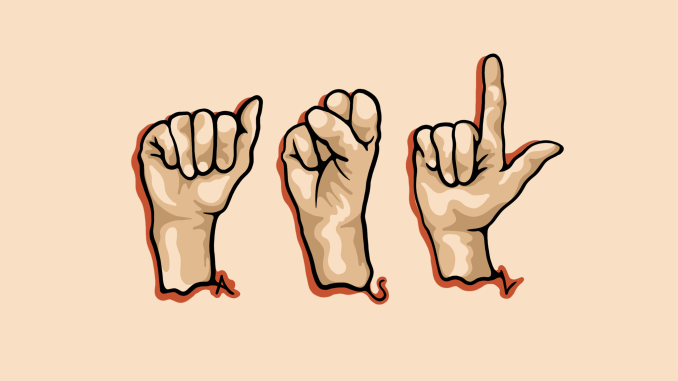
My Aunt Colleen was born deaf in Hartford, Connecticut, in 1957. She communicates entirely through American Sign Language. Though my mom is no expert, she always tried her best to teach my dad, my two older brothers and me some basic signs.
However, when Colleen would visit us growing up, my mom still acted as an interpreter between her and the rest of our family.
Every sentence Colleen signed was followed by a verbal, “What did she say?” from me and my brothers.
Every sentence we spoke was followed by my aunt signing, “What are they talking about?”
I pieced together our communications as best as I could, and although we could eventually make some semblance of conversation, it was usually unavailing. Every thought we shared was delivered second-hand, and I couldn’t help but wonder what was being lost in translation.
Although my aunt has never heard someone speak, and she can’t express to others what she is thinking or feeling with words, I’ve learned how to communicate effectively from her, and from my own sign language experience, which has changed our relationship for the better.
When I was 11, I attended my very first ASL class at Northampton Community College during the summer. My mom knew sign language was a great skill for me to have in my back pocket, and I was eager to learn it for myself after years of watching my aunt.
For several weeks, we studied the alphabet, learned easy conversational signs and commemorated the class by signing along to “Somewhere Over The Rainbow” by Judy Garland in front of a small audience of parents and siblings.
I continued taking sign language classes through my early teenage years to expand my ASL skills and knowledge of deaf culture. I learned to sign along to my favorite songs, taught my friends to fingerspell the alphabet and even used sign language on a few occasions to assist customers at my retail job.
It became a source of pride to have my own conversations with my aunt, even if my signing was slow, fractured and somewhat elementary. I could tell that she appreciated the energy that I had put into learning sign language.
Colleen’s eyes and her smile could practically light up the room when I’d show her the newest collection of signs I had mastered. For the first time during her visits, she could actually talk to me without the help of my mom.
Even though Colleen could sign faster than me, she was patient during our communication. She slowed down her signing so I could watch and translate. She wasn’t shy about correcting my ASL errors, but she never made me feel bad about forgetting a sign.
Learning sign language undoubtedly improved my ability to communicate one-on-one with the deaf community, but it also allowed my aunt to feel more connected to her own family. Her use of ASL around hearing people was just a unique difference, not a burden.
With just a little bit of dedication and hard work, I was able to completely transform my relationship with my aunt by learning her language. ASL not only served as our method of communication but also became a shared interest that we could bond through.
Communicating with my aunt through ASL taught me so much more about her, considering what I had known previously came through my mom’s translation. I was able to feel her signs and her emotions from an entirely new perspective, and I could now understand her on a completely different level.
I’ll forever be grateful to sign language for opening me up to a whole new world of culture and connection, and for fostering a union between Colleen and myself that could never have existed otherwise.



Be the first to comment